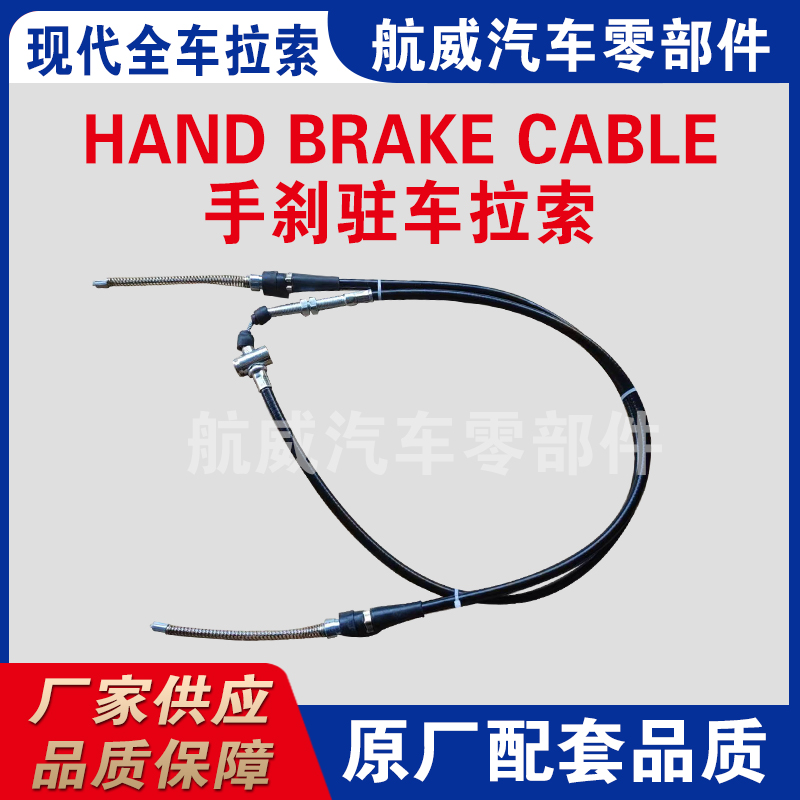Understanding the Mechanisms of Push and Pull Throttle Cables in Various Applications
Understanding Push and Pull Throttle Cables An Essential Component in Engine Control
Throttle cables play a crucial role in controlling the power output of internal combustion engines, particularly in vehicles, motorcycles, and various machinery. Among the different types of throttle cables, push and pull throttle cables are essential for managing the throttle valve's position, ensuring a smooth and responsive driving experience.
What Are Push and Pull Throttle Cables?
As the names imply, these cables operate through two distinct movements one for pushing and the other for pulling. The push throttle cable extends from the accelerator pedal to the throttle body, ensuring that when the driver presses the pedal, the throttle valve opens, allowing more air and fuel into the engine. Conversely, the pull throttle cable is responsible for returning the throttle to its closed position once the pedal is released. This dual-cable system is particularly important in applications where precision and reliability are paramount, such as in high-performance vehicles or complex machinery.
The Mechanism of Action
The push and pull throttle cables work in tandem. When the accelerator pedal is pressed, the push cable pulls the throttle lever open, which increases the engine's power output. This action also affects the vehicle's performance, as it directly correlates to acceleration. On the other hand, when the pedal is released, the pull cable takes over, allowing the throttle plate to close and reduce the engine's power, facilitating deceleration.
The cables themselves are typically made of high-strength materials, often encased in a protective sheath to minimize friction and wear. This design ensures longevity and reduces maintenance effects, which are crucial during high-stress situations like racing or off-roading.
Importance in Engine Control Systems
push and pull throttle cable

Push and pull throttle cables are vital for the effective functioning of an engine's control system. They provide a direct connection between the driver's inputs and the engine's response, allowing for precise control over the vehicle’s speed and power. In electronic throttle control systems, these cables can be replaced by sensors and motors. However, traditional push and pull systems are still favored in many applications for their simplicity, reliability, and ease of repair.
In performance applications, the quality and responsiveness of throttle cables can significantly influence driving dynamics. High-performance throttle cables are designed to offer minimal resistance, providing quick response times that are crucial for competitive racing or off-road driving. This ability to enhance response times and control is one of the reasons these cables are still widely used in various performance-oriented vehicles.
Maintenance and Troubleshooting
Like any mechanical component, push and pull throttle cables require maintenance. Regular inspections are recommended to ensure there are no frayed or worn cables, as these can lead to control issues and potential safety hazards. Signs of a failing cable can include a sticky throttle, erratic engine performance, or unusual noises when the accelerator pedal is operated.
When maintaining throttle cables, lubrication is essential to reduce friction and wear. Using the right type of lubricants, as specified by manufacturers, can extend the life of the cables and ensure smooth operation.
Conclusion
In summary, push and pull throttle cables are indispensable components in the control systems of various engines. Their ability to provide direct and responsive control over engine power makes them essential for both everyday and high-performance applications. Understanding their function, maintenance needs, and the role they play in vehicle dynamics is crucial for anyone involved in automotive care or performance driving. With the right attention and care, these throttle cables can ensure an optimal driving experience, enhancing both safety and performance on the road.
-
Upgrade Your Control with Premium Throttle CablesNewsAug.08,2025
-
Stay in Control with Premium Hand Brake CablesNewsAug.08,2025
-
Experience Unmatched Performance with Our Clutch HosesNewsAug.08,2025
-
Ensure Safety and Reliability with Premium Handbrake CablesNewsAug.08,2025
-
Enhance Your Vehicle with High-Performance Clutch LinesNewsAug.08,2025
-
Elevate Your Ride with Premium Gear CablesNewsAug.08,2025
